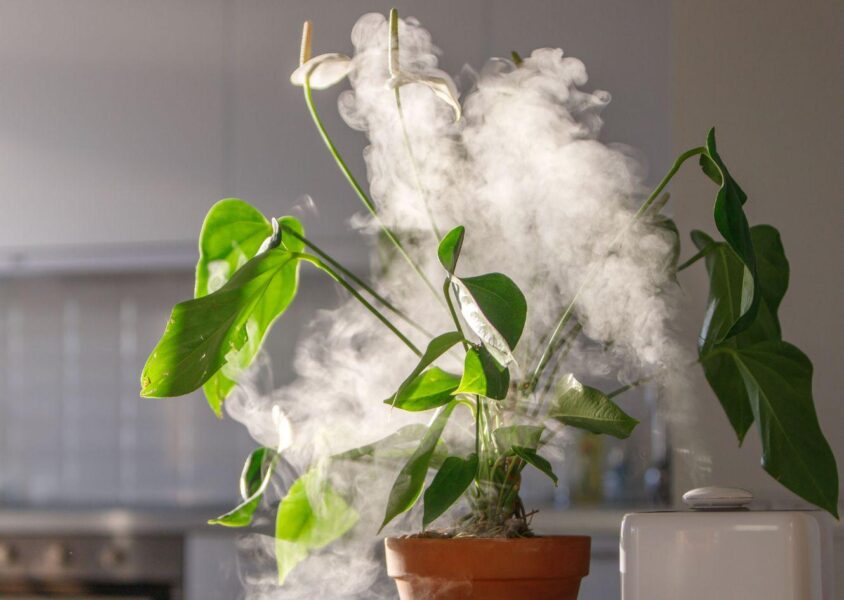If Indoor Plants Are Drying Out

Indoor plants, in a way, bring the backyard garden inside the room! Seeing the leaves dry out on the beloved plants suddenly can perplex even the most seasoned gardeners sometimes! Fortunately, you can address this issue without much hassle! There are a few different reasons why the leaves of indoor plants may be drying out:
A very obvious reason is that the plants are not getting enough water. If the soil is too dry, the leaves of the plants may wilt or dry out. Therefore, it’s important to water plants regularly, making sure to give them enough water so that the soil stays moist but not soggy. You might need to check a few things regularly. For example:
Is your plant close to an air duct? During winters, the hot air draft from these ducts can make the leaves dry out. First, try moving the plants away from the ducts.
Are the plants getting too much direct sunlight? Some indoor plants, especially those from tropical regions, may be sensitive to direct sunlight and may experience leaf damage or drying out if exposed to too much direct sunlight.
Is the air is too dry? Indoor plants may also suffer from dry leaves if the air in the room is too dry, especially in the winter when the air is naturally drier. Using a humidifier or misting the plants with water can help increase the room’s humidity and prevent the leaves from drying out.
Are the plants are being overwatered? Overwatering can also lead to dry leaves, as the excess water can cause the soil to become waterlogged, leading to poor drainage and root rot. It’s important to allow the soil to dry out slightly between waterings and to avoid overwatering the plants.
The plants are experiencing nutrient deficiencies. If the plants are not getting enough nutrients, they may experience leaf damage or dry out. A lack of fertilization can cause this. However, it can also be because of using soil that could be better suited to the needs of the plants.
Indoor Plants Need Humidity
In general, plants need humidity in the air. Indoor environments tend to become dry, which causes the drying out of the plant leaves. If it is not addressed quickly, the plant may die as well. There are a few different ways to increase humidity levels indoors:
Mist the plants with water regularly using a spray bottle. It can help to raise the humidity around the plants and can also help to prevent the leaves from drying out.
Place a tray of water near the plants and add pebbles or rocks. As the water evaporates, the humidity in the surrounding area will increase.
Use a humidifier to add moisture to the air. Humidifiers can be particularly useful in dry or air-conditioned environments.
Group plants together. The moisture released by the plants can help increase the humidity in the surrounding area.
Keep the plants watered. Watering the plants can help increase the room’s humidity, as the water applied to the soil will evaporate and add moisture to the air.
It’s important to remember that some plants are more sensitive to low humidity than others, so it may be necessary to provide extra humidity for certain plants. Plants that originate from tropical regions tend to be more sensitive to low humidity, so it is a good idea to pay extra attention to their moisture needs.